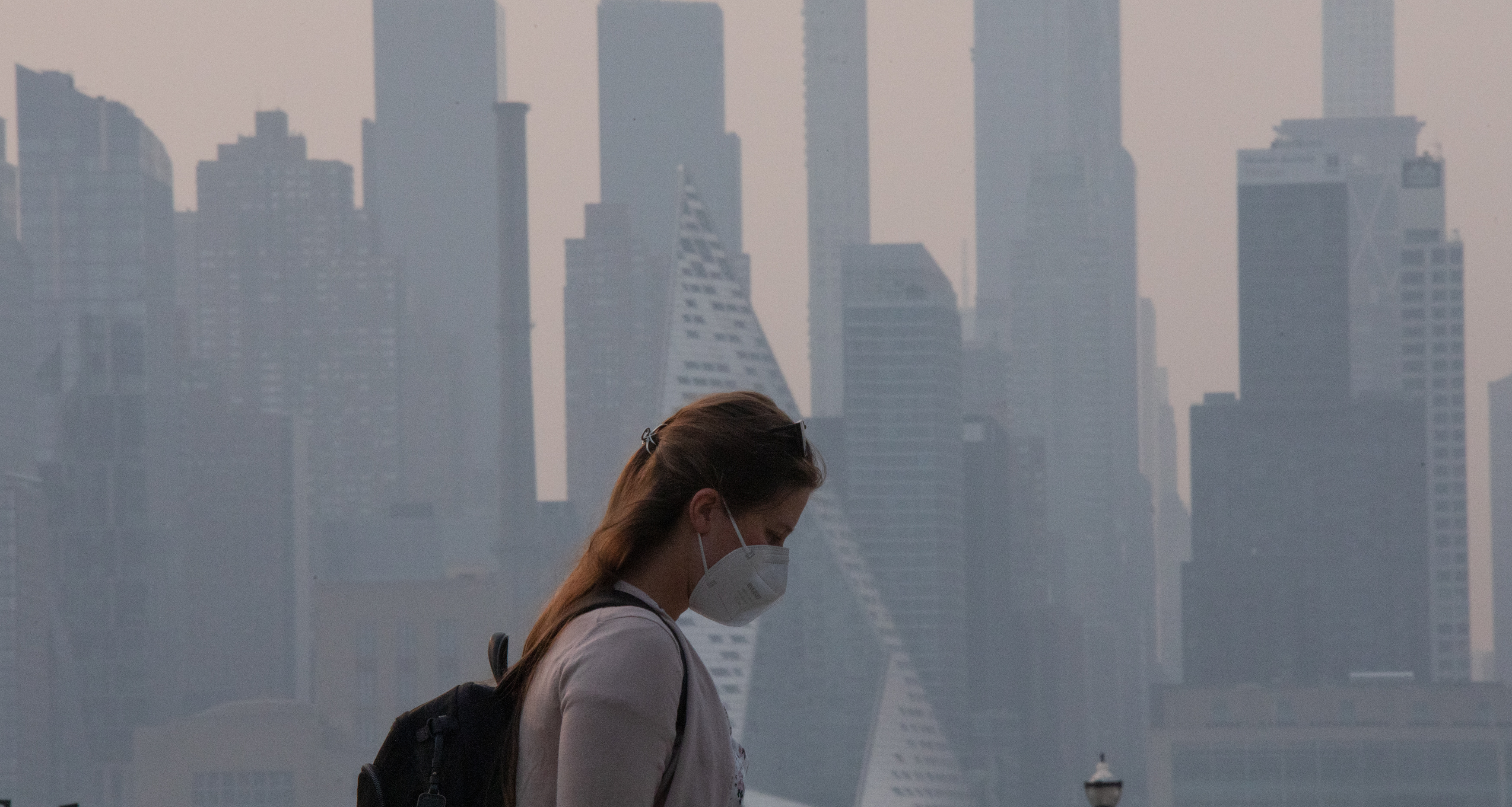
HOW TO STAY SAFE FROM WILDFIRE SMOKE
This week, many people who live in the U.S. have woken up to hazy skies. Wildfire smoke from Eastern Canada continues to trail down the East Coast and as far west as Minnesota. State and local authorities have issued air-quality warnings throughout the affected regions, and it could be days before they’re lifted.
Wildfire pollution may be a new threat to some of these regions, but with global temperatures climbing, it could be more common in the future. Here’s what to know about staying safe until the smoke clears.
Adjust your day if you’re most at risk
Because of high concentrations of tiny, difficult-to-filter particles—known as PM2.5—in wildfire plumes, exposure to this type of smoke can be harmful to anyone. Poor air quality is particularly dangerous to those with chronic lung diseases, asthma, and allergies, as well as children, elderly people, and pregnant women. People in these categories should expect that any existing respiratory symptoms they have will get worse within a day of limited exposure to highly polluted outdoor air, says Dr. Aida Capo, a pulmonologist at Hackensack Meridian Health in New Jersey. After just a couple of days of exposure, “people who have cardiovascular disease can feel worsening of their symptoms as well,” she says.
Read More: What Wildfire Smoke Does to the Human Body
Anyone who falls into these categories should take safety precautions most seriously, says Capo, and that includes keeping any medications or devices—like rescue inhalers—on hand. If you know you’re going to be exposed, she adds, consider using these solutions proactively. (Today’s not the day to skip your allergy pill.) Over the past few days, in addition to an increase in office visits and hospitalizations for people with asthma, “we’ve had an increase in allergy symptoms, hoarseness, and sore throats, and some people are even complaining of fatigue,” Capo says. “These are all pretty immediate effects.”
Stay inside and latch your windows
“If you have any type of chronic illness, it is recommended that you stay indoors” for the duration of an air-quality warning—even if it lasts for a few days, Capo says. That’s also the best way for lower risk people to stay safe.
Though that may not be possible for everyone, anything you can do to spend more time indoors will minimize your exposure to the air outside. Reschedule outdoor plans where possible, or skip the scenic route on your walk back from work. “This is not the day to go hiking and be outside for five hours,” Capo says.
She also stresses the importance of keeping windows and doors closed. This doesn’t just mean sliding your wide-open window down to a crack: Because of the small size of the harmful particles in the haze, it’s best to seal windows and doors “as much as you can,” Capo says. While there’s no need to use rolls of tape and plastic to reinforce seams, it’s worth at least checking that latches are flipped in the locked position.
While indoors, make sure air is being circulated, either via air conditioning systems, fans, or freestanding air purifiers. “Our air conditioners are well equipped to take care of these problems,” Capo says. In-window AC units are safe to leave in and operate during air-quality events, as long as they form a good seal with the window on either side.
Wear an N95 respirator outdoors
If going outside is unavoidable, there are still a few things you can do to minimize your risk. First, don’t choose to exercise outdoors. Exposure to multiple types of air pollution at once—wildfire smoke, plus the kind that comes from cars, for instance—compounds your risk, and data have long shown that people take in more pollutants during exercise than during normal outdoor activity.
Wear a well-fitting N95 mask when you go outside. Basic surgical masks and cloth masks are made of materials that have holes far too big to effectively filter the tiny types of polluting particles spread by fires, and while N95s don’t perform perfectly against them, wearing them will lower exposure. Capo stresses, however, that going outside with any mask is still not as safe as staying indoors.
It’s hard to predict how quickly the smoke will dissipate over different regions, so there won’t be one broad answer on when it’s safe to go outdoors again. Keep an eye on updates from local authorities like health organizations and weather trackers, Capo says, and follow their recommendations once air-quality warnings are lifted.
2023-06-07T19:37:21Z dg43tfdfdgfd